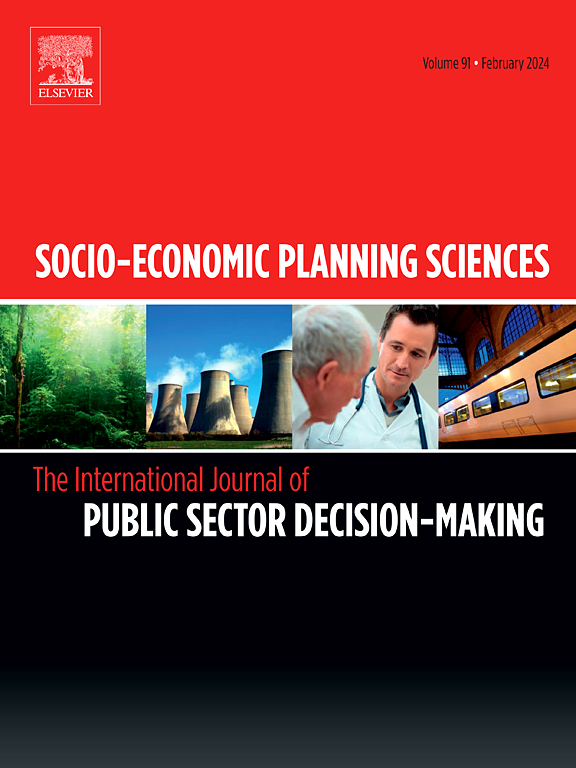Addressing community oppositions in biowaste incineration infrastructure: Key factors and strategic solutions for a sustainable circular bioeconomy
IF 5.4
2区 经济学
Q1 ECONOMICS
引用次数: 0
Abstract
The rapid urbanisation in China has substantially increased municipal waste generation, with biowaste comprising the largest portion. Due to its high organic content, biowaste can be recycled or incinerated to produce bioenergy, making incineration a predominant waste treatment method. However, biowaste incineration facilities have often raised community-level concerns due to worries about environmental pollution and public health risks. These issues are typically classified as “Not In My Backyard” (NIMBY) conflicts in public management. Despite the prominence of these conflicts, research lacks a comprehensive examination of their key driving factors. This study addresses this gap by systematically investigating the primary risk factors underlying NIMBY incidents associated with biowaste incineration infrastructure.
A hybrid model combining the Decision-Making and Trial Evaluation Laboratory (DEMATEL), Interpretative Structural Modelling Method (ISM) and Bayesian Network (BN) was applied to conduct causation chain and sensitivity analyses, enabling the identification of critical risk factors. The results reveal that insufficient public participation, inadequate information transparency and misaligned risk perceptions are the primary contributors to NIMBY conflicts. Strategic solutions are proposed for governments and infrastructure enterprises to address these issues, including enhancing public engagement, improving information disclosure and implementing effective risk communication strategies. These measures aim to mitigate NIMBY conflicts, foster social harmony and facilitate the implementation of essential infrastructure projects.
This study enhances the understanding of NIMBY conflicts by systematically identifying and analysing the key risk factors specific to biowaste incineration infrastructure, an area that has been underexplored in existing research. Additionally, the use of the DEMATEL-ISM-BN hybrid model introduces a significant methodological innovation, facilitating a comprehensive examination of causality, hierarchical structures, and probabilistic relationships among these risk factors.

解决社区对生物垃圾焚烧基础设施的反对意见:可持续循环生物经济的关键因素和战略解决方案
中国的快速城市化大大增加了城市垃圾的产生,其中生物垃圾所占的比例最大。由于其有机含量高,生物垃圾可以回收或焚烧产生生物能源,使焚烧成为主要的废物处理方法。然而,由于担心环境污染和公共健康风险,生物垃圾焚烧设施经常引起社区一级的关注。这些问题通常被归类为公共管理中的“邻避”(Not In My Backyard)冲突。尽管这些冲突十分突出,但研究缺乏对其关键驱动因素的全面考察。本研究通过系统调查与生物垃圾焚烧基础设施相关的邻避事件的主要风险因素来解决这一差距。采用决策与试验评估实验室(DEMATEL)、解释结构建模方法(ISM)和贝叶斯网络(BN)相结合的混合模型进行因果链和敏感性分析,识别关键风险因素。结果表明,公众参与不足、信息透明度不足和风险认知偏差是邻避冲突的主要原因。提出了政府和基础设施企业应对这些问题的战略解决方案,包括加强公众参与、完善信息披露和实施有效的风险沟通策略。这些措施旨在减轻邻避冲突,促进社会和谐,并促进实施重要的基础设施项目。本研究通过系统地识别和分析生物垃圾焚烧基础设施的关键风险因素,增强了对邻避冲突的理解,这一领域在现有研究中尚未得到充分的探索。此外,使用DEMATEL-ISM-BN混合模型引入了一种重要的方法创新,促进了对这些风险因素之间的因果关系、层次结构和概率关系的全面检查。
本文章由计算机程序翻译,如有差异,请以英文原文为准。
求助全文
约1分钟内获得全文
求助全文
来源期刊

Socio-economic Planning Sciences
OPERATIONS RESEARCH & MANAGEMENT SCIENCE-
CiteScore
9.40
自引率
13.10%
发文量
294
审稿时长
58 days
期刊介绍:
Studies directed toward the more effective utilization of existing resources, e.g. mathematical programming models of health care delivery systems with relevance to more effective program design; systems analysis of fire outbreaks and its relevance to the location of fire stations; statistical analysis of the efficiency of a developing country economy or industry.
Studies relating to the interaction of various segments of society and technology, e.g. the effects of government health policies on the utilization and design of hospital facilities; the relationship between housing density and the demands on public transportation or other service facilities: patterns and implications of urban development and air or water pollution.
Studies devoted to the anticipations of and response to future needs for social, health and other human services, e.g. the relationship between industrial growth and the development of educational resources in affected areas; investigation of future demands for material and child health resources in a developing country; design of effective recycling in an urban setting.
 求助内容:
求助内容: 应助结果提醒方式:
应助结果提醒方式:


